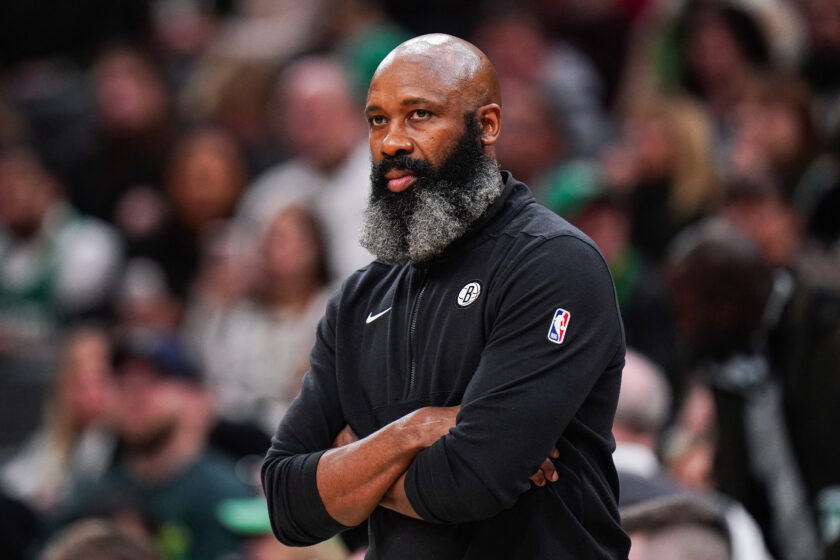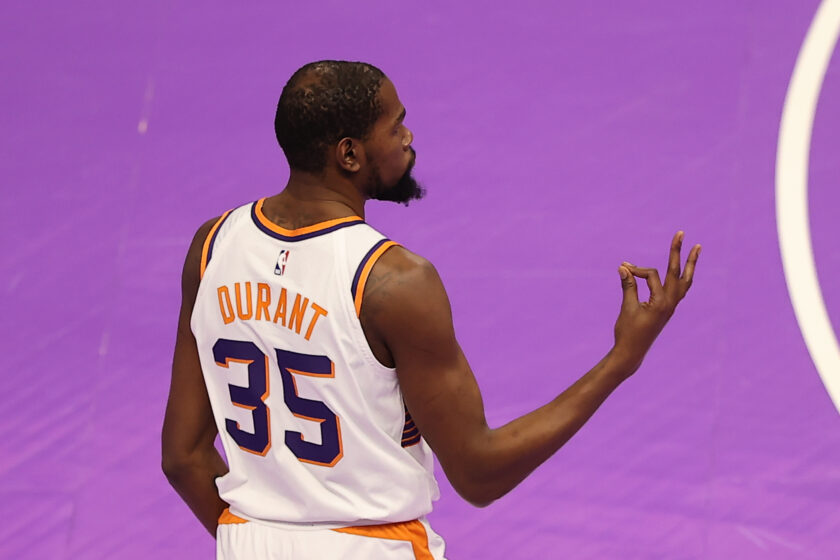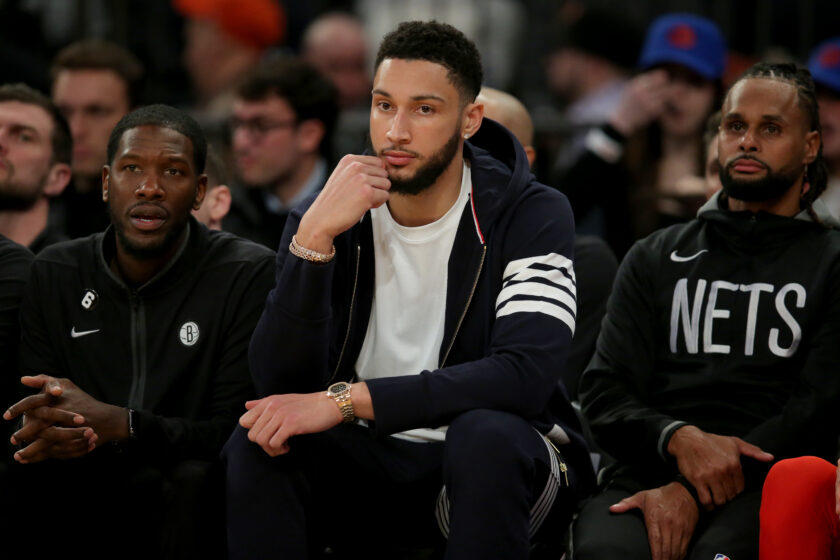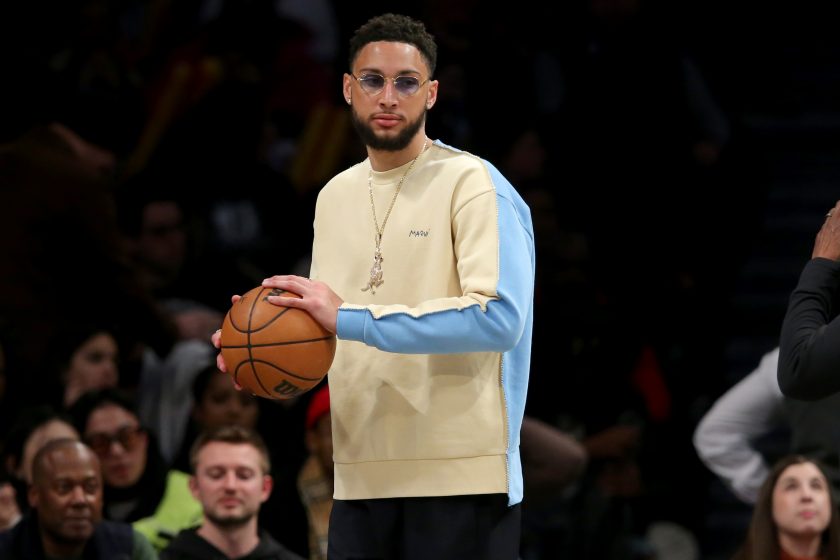The Brooklyn Nets could resemble an evolved 2016 Cleveland Cavaliers
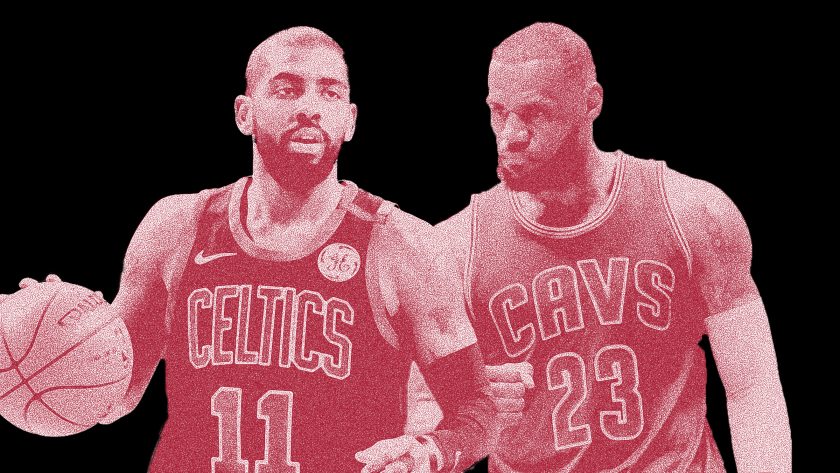
Similar to the 2016 Cavaliers, Kyrie Irving and Kevin Durant provide endless isolation scoring. But the Brooklyn Nets’ dynamic duo is capable of much more.
[sc name=”Matt Brooks Banner”]Every summer, right after the conclusion of free agency, I plop down and rewatch the 2016 NBA Finals. It’s become a tradition of sorts in my household.
Admittedly, this heritage began as a form of anti-Warriors therapy. Shortly after blowing the 3-1 lead in the 2016 Finals, the Dubs grabbed Kevin Durant and, um, laid the absolute smackdown against the rest of the league. Rewatching this classic series provided a window into a world in which Golden State could, you know, actually lose a seven-game series. For a while there, it felt as if this sacred universe of parity was nothing more than a fantasy.
I continued my tradition last week but the surrounding stigma was much different this year. No longer was this a viewing experience of pure spite. Instead, my goal was to gain insight into Brooklyn’s new superstar duo by analyzing an eerily similar pairing of stars.
The 2016 Cleveland Cavaliers placed Kyrie Irving in his perfect role: ace 1B option to a title team. While LeBron James shouldered the load of franchise player (i.e. dealing with the media; building teammate relations), Irving had the opportunity to do what he does best, “play basketball at a very high level.”
Watching Kyrie’s career unfold since that historic comeback has been a fascinating journey. Just one summer after hoisting the “Larry O-B” trophy, Irving requested a trade from the Cavaliers. According to Kyrie, “Cleveland made it ‘very clear’ he wasn’t the face of the franchise.”
Kyrie got his wish as he was sent packing to Boston. For two seasons, Kyrie Irving was the undisputed guy… and he absolutely floundered within the role. Things have ultimately come full circle and now Irving is back in a position of comfort: the co-star to Durant in Brooklyn. Off the floor, one can only assume that Durant—three years Irving’s senior—will shoulder those unsavory responsibilities. But it’s the product on the hardwood that really interests me.
Comparing 2016 Irving-James to 2020 Durant-Irving is a fairly straightforward exercise. At the time, 31-year-old LeBron James was at the top of the league. If all goes right, Kevin Durant—who turns 31 in September—fully rehabilitates from his Achilles rupture and re-establishes himself as one of the five best players in the association. In both scenarios, Irving is the perfect ancillary piece. The drop-off in talent is fairly slim.
Let me be truthful about something. Diving deep into the 2016 Finals footage, I expected a great deal of James and Irving two-man action. I was hoping those Cavs could provide us with a clearer picture of the 2020 Nets’ style. I was ready for it all: back cuts galore, heavy use of the pick-and-roll, gorgeous implementation of Irving’s spot-up talents, poster-worthy alley-oops…
Yet the more I dissected film, the more I realized how little Irving and James worked together. It was a true rarity to see both players touch the ball in the same possession. How could two Hall of Famers—one of which is an all-time great playmaker—collaborate so… independently?
For the most part, Irving and James exhibited the highest degree of turn-taking on the NBA’s biggest stage. For Kobe-ists, the Cavs’ offense must have felt like basketball salvation. During the 2016 postseason, Cleveland averaged the fifth-fewest passes per game. When Cleveland’s ballhandlers chose to dish the ball, it was primarily as an alley-oop to a Cavalier big.
To Cleveland’s credit, their old school approach worked. Allowing Irving and James to alternate isolation possessions was the best form of Cavalier offense. Concurrently, keeping pace with two of the league’s most dominant offensive players was a fool’s errand for the poor Golden State defenders. Game 5 proved to be a turning point in the series. It was also the climax of the LeBron-Kyrie era.

Watch from minute 6:44 to 7:45. This is how you kill defenders off the dribble, young hoopers.
In the end, LeBron and Kyrie finished with 41 points apiece. It was a legendary performance. Even more impressive: The two accomplished this while barely passing the ball to each other.
The 2016 Cavaliers provided the world with apex-level one-on-one showmanship. On the flip side, I’ve seen AAU teams with better teamwork and collaboration. During the 2015-2016 season, 8.9% of the Cavaliers’ total possessions came from isolation—the fifth-most in the league. That number only soared in the postseason. Cleveland’s 13.8% isolation frequency was the postseason’s second-highest number (behind the Lance Stephenson-led Memphis Grizzlies… yes, you’re reading that correctly. The 2016 Grizz caught the injury bug at the worst time).
So, what does all of this have to do with your 2019-2020 Brooklyn Nets? Well, think of the 2016 Cavaliers as a baseline for Brooklyn’s offense.
Now, before you throw your computer (or phone) across the room after reading this larger-than-life statement, allow me to explain myself. Similar to Cleveland, Brooklyn has two stars who can create their own shots regardless of the defender. In Irving’s case, he’s still a streetball wizard who comes equipt with every spin move, ankle-breaking crossover, scoop shot, and off-the-dribble three-pointer in the book.
Durant, meanwhile, is a 7-foot mismatch machine. He towers over guys who can match his speed and he’s quicker than opponents who mirror his stature. Plus, the dude is 50/40/90 capable shooter who posted an unreal 66.1% true shooting percentage during the 2019 postseason. At his peak, he’s an uber-athletic Dirk Nowitzki.
A lot of things have to go right in order for this duo to lay wasteland. Namely, Durant needs to return at 90% (at minimum) of what he used to be. But if all goes right, Brooklyn will boast three of the league’s top-15 scorers in terms of total isolation points: Irving, Durant, and Spencer Dinwiddie.
The Brooklyn Nets weren’t exactly shy about isolating last year; per Synergy, Brooklyn’s isolation percentage was a top-four mark during the regular season. That number crept up from 8.1% to 10.2% during the postseason. With Durant and Kyrie in the fold, expect yet another jump.
During the 2016 playoffs, only 15.9% of the Cleveland Cavaliers’ possessions came from the pick-and-roll (10th out of 16 teams). A whopping 26.7% of Brooklyn’s total possessions involved pick-and-roll—the most of any playoff team.
[sc name=”Nets Center”]Brooklyn could go the 2016 Cavs route by dropping its massive pick-and-roll numbers and running a turn-taking isolation-dominant system. Irving and Durant are good enough as one-on-one talents to make this work. But that doesn’t fit Kenny Atkinson‘s offense, so I doubt that happens. Not to mention, it’s a waste of Kevin Durant’s spot-up shooting talents.
This is where Brooklyn can separate itself from the Championship Cavs. While Brooklyn may not possess a player as dominant as 2016 LeBron James, the Nets benefit from a better coaching staff—and one that is willing to try things. Durant and Irving could win games by working together rather than next to each other. The potential of a KD-Kyrie pick-and-roll is almost sickening. Last season, Irving was outstanding as a pick-and-roll ballhandler, ranking within the 86th percentile. However, he only ran this play 6.6 times per game.
Durant, meanwhile, barely qualified as a pick-and-roll screener with just 39 total possessions. This was by design; Golden State finished 29th in pick-and-roll usage. I, personally, always found this strange. Durant has the size of a center and the shooting ability of a Splash Bro. He was practically designed in a lab as a pick-and-pop demigod. The Stephen Curry-Kevin Durant pick-and-roll could have been the deadliest play in basketball. Instead, it was rarely deployed.
Brooklyn will have the ability to unlock Durant as a screener within the pick-and-roll. Allow me to walk you through this scenario:
At the beginning of the possession, Durant sprints toward the three-point line to set a screen on Kyrie Irving’s man. The goal would be to engineer a switch: Kyrie could burst by Durant’s slower man for a layup or Durant could shoot over the top of Kyrie’s defender. Let’s say both defenders stayed home and switched correctly. Kudos to them but they’re still left with unfavorable options. Now, it’s on them to slow Kyrie as he barrels to the basket to do… this.

Or, they’re forced to futilely get a hand up in Durant’s face as he pops behind the arc for three. Defend him all you want, there’s still a good chance KD cans that outside shot. After all, the man splashed 50% of his tightly contested postseason looks from deep.

If Brooklyn was feeling especially cruel, they could vary Durant’s role as a screener. In some plays, Durant could “slip” the screen for wide-open shots near the rim. Essentially, Durant would begin the possession like any normal pick-and-roll and hustle towards Kyrie’s defender to set a screen. Right before Durant made contact with Kyrie’s defender, KD would change directions on a dime and lurch towards the rim. Ideally, this sends Durant’s defender stumbling in the wrong direction. From there, Irving would loft a pass over the teeth of the defense to Durant, who would slam home a dunk.

There are so many other ways in which Brooklyn could deviate from traditional pick-and-roll: flare screens; backscreens; subsequent handoffs. The list goes on and on. But it all stems from the same thing—the oldest play in the book.
Durant improved dramatically as a Golden State Warrior. He became a terrifying pin-down threat; KD unlocked his midrange game as a cross-screen menace; he grew active as a cutter near the basket. Now, Durant and his new Brooklyn teammate, Irving, can combine forces and take a giant step forward. Already among the league’s most devastating isolation players, KD and Uncle Drew could form one of the deadliest pick-and-roll tandems this association has ever seen.
Kenny Atkinson and the Brooklyn Nets spent years refining a killer pick-and-roll offense. It’s time to put the pieces together with a Hall of Fame duo running the show. Unleash Kevin Durant and Kyrie Irving at their full potential, Kenny Atkinson. The fans in Brooklyn are ready.
[sc name=”Nets Link Next” link=”https://elitesportsny.com/2019/07/12/thank-you-letter-to-dangelo-russell-from-brooklyn-nets/” text=”The Appropriate ‘Thank You’ Letter To D’Angelo Russell” ]An NBA fanatic who specializes in the advanced analytics of the game. I cover the Brooklyn Nets here in the city. Follow me on Twitter for semi-witty basketball tweets. @MattBrooksNBA

